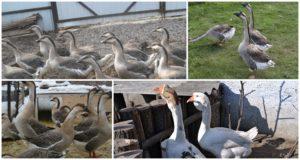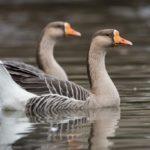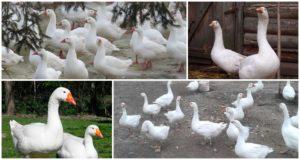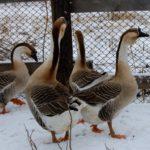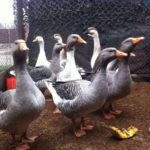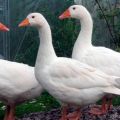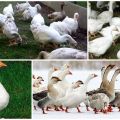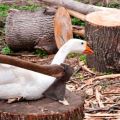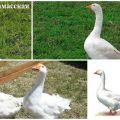Description and characteristics of geese of the Kuban breed, their breeding and care
The Kuban breed of geese is very popular with farmers. These birds are distinguished by their undemanding conditions of keeping and high productivity parameters. For bird breeding to be successful, it is important to feed them correctly and follow some recommendations. Compliance with the rules of hygiene and the prevention of pathologies are of no small importance.
History of the breed
The Kuban Agricultural Institute was engaged in the selection of this breed of geese. Scientists have set themselves the task of developing a new breed with high egg production parameters. At first, Chinese and Gorky individuals were used as the basis for the Kuban geese. Genes from wild birds were also used in the population. This influenced the color of the birds. In appearance, the geese resembled wild birds, but had a calm disposition.
However, the breeding work was not completed on this. Scientists decided to breed more beautiful birds with a domesticated appearance. For this, they crossed the Gorky breed with the endemic and Vishtines. The result is beautiful white birds.
Description and characteristics of gray Kuban geese
A distinctive feature of these geese is the location of the chest. She is slightly upbeat. When viewed from the side, the body is shaped like a rook. The birds are characterized by a long and curved neck. They also have a large head with a bump on their forehead. The legs are medium in size and the paws are dark in color. Kuban geese are characterized by gray-brown feathers. On the head and neck of birds there is a dark brown stripe.
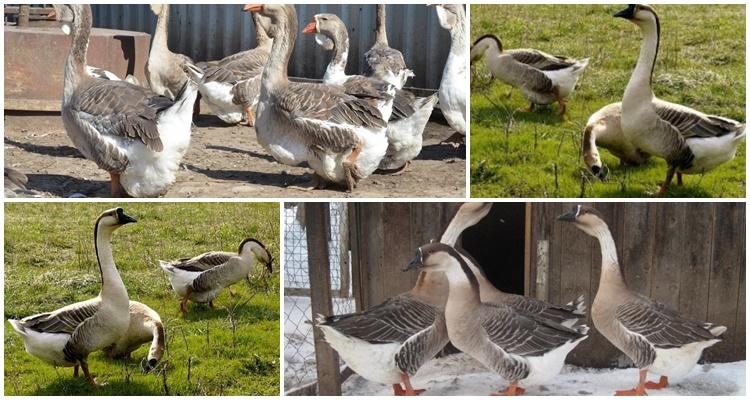
Feathered tend to lead a gregarious lifestyle. In this case, there should be 2 males for 10 females. In this case, it will be possible to get good offspring. Moreover, geese will be sociable and friendly. Birds are distinguished by a developed incubation instinct - they raise up to 90% of chicks from laid eggs.
The main characteristic of birds is high egg productivity. At the same time, farmers appreciate the birds for their delicious meat. Kuban geese belong to a medium-heavy breed. They are fast developing. At 2 months, the birds weigh 3 kilograms, and in six months their weight is 5-6 kilograms.
Birds begin to rush at 8-9 months. At the same time, geese bring 100 large eggs per year. They are light milky in color and covered with a thick shell.Productivity parameters are decreasing every year. Therefore, farmers usually do not keep geese for more than 4 years.
Main pros and cons
This breed is considered unpretentious. It is perfectly adapted to Russian conditions.
At the same time, the disadvantages of the Kuban geese are considered very conditional. The main one is considered to be a relatively small body weight.
Maintenance and care
To achieve high parameters of bird productivity, it is important to provide them with proper care.
Poultry house and walk
In the warm season, the birds are free-range all day. At the same time, for an overnight stay, they are recommended to build a corral, covering it with a net. It is recommended to protect birds from precipitation with roofing material. Birds are not afraid of the night temperature drop.
In order for birds to develop normally, they need a reservoir and free range. Some farmers create an artificial puddle for birds. When organizing space for walking geese, the following features should be considered:
- goslings 1-2 months old need 1 square meter of free space;
- birds aged 3-5 months need to allocate 5 meters of area;
- geese over six months need up to 15 meters of a plot with fresh herbs.
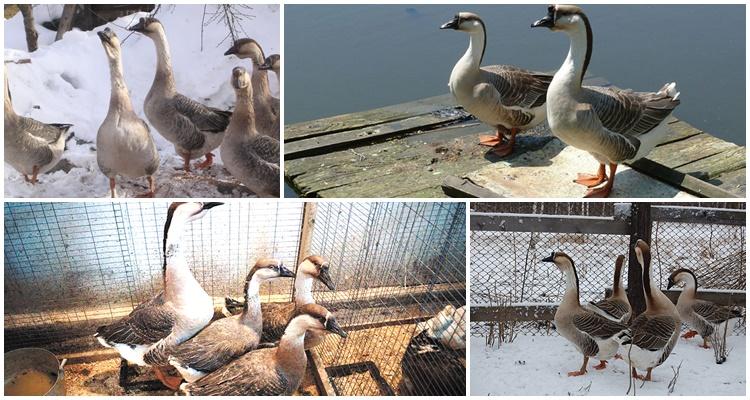
When creating a winter house, it is important to consider certain rules. It is important that it is warm and free of cracks. In this case, the availability of high-quality ventilation is of great importance. It is recommended to calculate the area of the premises taking into account the number of birds. 1 goose requires 1 square meter of space.
Dry and clean bedding is also important. It is made from sand, straw, sawdust, shavings. The room should be free from dampness or drafts.
Nutrition
A properly formulated diet has a beneficial effect on the health and longevity of birds. Geese should not be deprived of vitamins and minerals. Their deficiency will negatively affect the quality of meat and eggs. It is recommended to give adult birds grains, vegetables, silage, compound feed. In summer, birds need a lot of greenery. They need at least 2 kilograms of feed per day.
A distinctive feature of birds is that they are quite picky. Geese of this breed will not eat poor quality feed. To make it easier for birds to digest food, it is recommended to add coarse sand or fine shell rock to the food.
It should be borne in mind that geese require 24/7 access to food. They eat food at night. Goslings need special nutrition. It is recommended to give boiled yolks to newborn chicks. They are easy to digest and help chicks adapt to eating solid foods.
On the 5th day of life, it is permissible to introduce greens into the diet. After 7-10 days, it is recommended to increase the volume of the herb, since it contains many vitamins. On the 15th day, boiled vegetables should be introduced into the diet. Moreover, their volume should not exceed 15% of the daily amount of food.
Hygiene
For birds to grow and develop normally, it is important to systematically clean the house. In this case, it is recommended to treat the room with disinfectants. There should be litter on the floor of the house. It is important that it is dry and clean. Partially, it should be cleaned every 2 days. It is recommended to completely change the litter once a week.
Breeding the breed
The period of puberty in Kuban geese begins at 240-300 days of life. Geese part with eggs easily. Therefore, incubators are usually used to breed chicks. Determining the sex of one-day-old birds can be difficult.This can usually be done by size. Drakes are slightly larger than geese. The goslings need shelter for 2 weeks. After that, they are released into free range. At this time, it is not necessary to put containers with water for the chicks, since they can drown.

Bird diseases
Pathologies in geese usually develop if the rules for caring for them are not followed. The main factors include the following:
- non-compliance with hygiene rules;
- dampness and drafts in the poultry house;
- malnutrition;
- stale water.
If the conditions of detention are violated, there is a risk of developing aspergillosis, colibacillosis, pasteurellosis, salmonellosis. Also, birds may encounter helminthic infestation or vitamin deficiency. Kuban geese are distinguished by high egg productivity and tasty meat. To achieve success in raising birds, it is important to provide them with complete and high-quality care.
